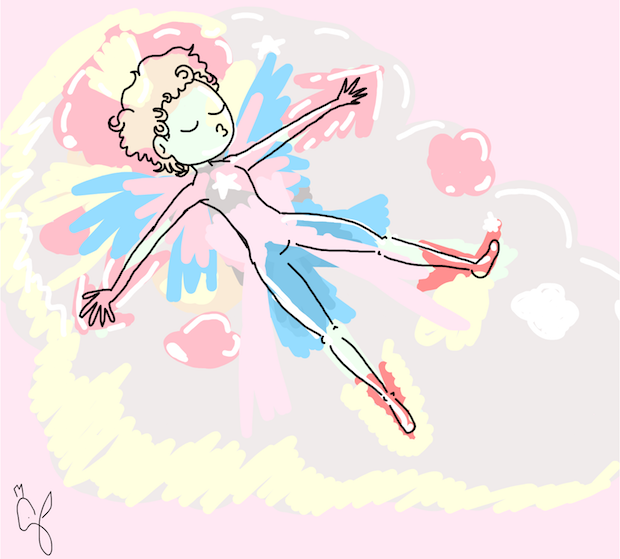All of us who practice yoga have known an instructor who counts much too slow for our tastes.
During his class, you hold Downward-Facing Dog while beads of sweat drip onto your mat. Anger grows inside you as you impatiently wait for him to say “five,” cueing that you can relax. You’re amazed and infuriated by his ability to turn five seconds into 20 seconds.
You begin to wonder if the man has forgotten about you. Does he even know what he’s doing?!
When we become uncomfortable, whether in a yoga class, at work, or in a social scenario, it’s important to recognize and understand the uncomfortable feelings arising within ourselves. Analyzing our uncomfortable moments can help us remain calm and prevent us from placing blame on undeserving individuals, such as the slow-counting yoga instructor.
But beyond this, uncomfortable moments can be of great value. These moments can help us learn about ourselves. They teach us how to be less reactive, and eventually, to find comfort in uncomfortable situations.
Finding comfort in the uncomfortable is something that can bring us closer to the person we want to be, and even more, it can lead us to change ourselves.
Although some of us are resistant to change, change is inevitable and something we need to become more accepting of. Whether the change being requested of you is learning how to use the latest technology or breaking an old habit, it’s important to continue adapting.
And in order to do that, we have to learn to find comfort in our discomfort.
Recognizing discomfort
If you observe a yoga class, it’s pretty easy to recognize when students are uncomfortable.
People tend to fidget in poses. They sweat more. They furrow their brows. They look at their neighbors.
If someone is not perfectly still in a pose, it shows they are struggling. These are all signs that a yoga student is uncomfortable.
Of course, it’s natural to be uncomfortable in yoga poses. Poses are difficult to hold, and it’s okay if we cannot perfect a pose.
But we often forget that being uncomfortable is part of the point. We go to an asana class to improve our physical flexibility and strength, and that requires work and stress on the body—both of which can be uncomfortable.
Aside from physical discomfort, feeling uncomfortable is usually due to an unfamiliar experience.
When we experience something new, we don’t always know how to act appropriately or how to deal with the unfamiliar emotions that arise.
We tend to feel anxious in social situations when meeting new, “important” people.
We feel stressed when we are overloaded with work.
We feel confused when we don’t understand.
Situations can become irritating, agonizing, or even torturous. Being overcome by these emotions often leads to inappropriate actions, which can result in regretful decision-making. Preventing the whole process of dealing with something unfamiliar often seems ideal, as we won’t have to suffer any negative repercussions.
When we become uncomfortable, all we want to do is remedy the situation through avoidance.
What being uncomfortable means
Reacting to uncomfortable situations is understandable. Humans are emotional creatures, and it’s difficult for us to control our emotions at times.
However, it’s important to notice that we have patterns during uncomfortable situations and that emotions are often involved in those patterns. We tend to be highly emotional and overreact when we are uncomfortable.
Regardless of what emotions we feel, having an emotional response to a situation signifies discomfort. And discomfort is a huge distraction to our minds. When faced with these situations, we have a difficult time focusing on anything aside from our uncomfortable feelings.
Again, the slow-counting yoga teacher is a great example. When the teacher counts slowly, the pace is all we can think about. We focus on the flaws we perceive in the teacher, rather than improving our own physical strength or flexibility. We completely forget our intention because our attention has been diverted, and we are now focused on negative, reactive emotions.
Being uncomfortable also means we have an opportunity to change and improve. We should be able to handle ourselves in any situation that life throws at us. Uncomfortable situations offer us a challenge and give us an opportunity to address all of the difficulties that life has to offer.
To overcome any challenge in life or to adapt to any flaw we see in ourselves, we must enter into uncomfortable situations. These are the opportunities for growth. We cannot expand our skills without going through the experience of having to learn.
And that’s exactly what being uncomfortable should be about: learning.
Being uncomfortable helps us learn about the environment around us and how we respond to that environment. It’s an opportunity to learn to soothe ourselves, discover ourselves, and make ourselves feel more comfortable in situations we normally cannot.
The luxury of comfort
The whole idea that practice makes perfect isn’t true.
But practice can make for improvements.
Change is not about perfection, nor is it about becoming people we are not. It’s about improvement. It’s about acquiring new characteristics, molding ourselves into the people that we’d like to be, and becoming more confident.
When we’re comfortable, we’re more relaxed. We are more aware. We can learn more easily.
By teaching ourselves to be comfortable when we normally are not, we will learn and change.
And change is something that the human species needs to embrace. Whether we like it or not, the world is in a constant flux and we are a part of this world.
In order to keep up, we need to embrace the uncomfortable and find comfort in it—because it does exist, and it can be found.
Author:Kelsey Joan
Image: SketchPort/Carlos
Editor: Callie Rushton












Read 0 comments and reply